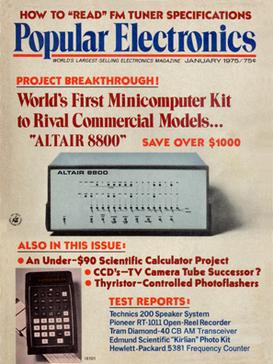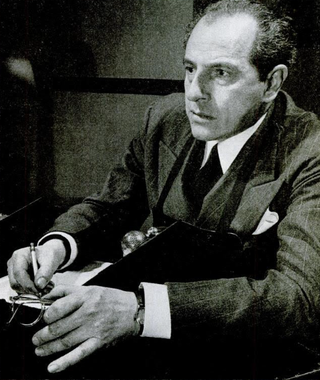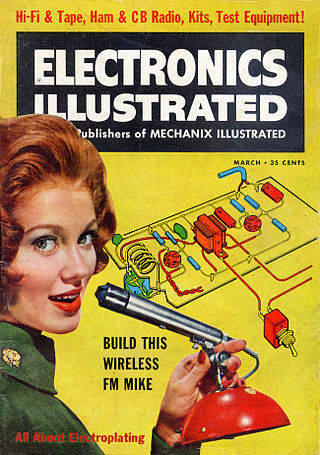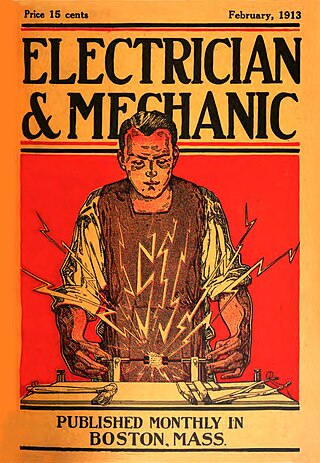
"Do it yourself" ("DIY") is the method of building, modifying, or repairing things by oneself without the direct aid of professionals or certified experts. Academic research has described DIY as behaviors where "individuals use raw and semi-raw materials and parts to produce, transform, or reconstruct material possessions, including those drawn from the natural environment ". DIY behavior can be triggered by various motivations previously categorized as marketplace motivations, and identity enhancement.
This Old House is an American home improvement media brand with television shows, a magazine, and a website. The brand is headquartered in Stamford, Connecticut. The television series airs on the Public Broadcasting Service (PBS) television network and follows remodeling projects of houses over a series of weekly episodes.
Popular Science is an American popular science website, covering science and technology topics geared toward general readers. Popular Science has won over 58 awards, including the American Society of Magazine Editors awards for its journalistic excellence in 2003, 2004, and 2019. Its print magazine, which ran from 1872 to 2020, was translated into over 30 languages and distributed to at least 45 countries. In 2021, Popular Science switched to an all-digital format and abandoned the magazine format in 2023. A Verge article published November 27, 2023, referred to a statement from the communications director of PopSci's owner, Recurrent Ventures, Cathy Hebert, indicating that Popular Science "will no longer be available to purchase as a magazine".

Popular Electronics was an American magazine published by John August Media, LLC, and hosted at TechnicaCuriosa.com. The magazine was started by Ziff-Davis Publishing Company in October 1954 for electronics hobbyists and experimenters. It soon became the "World's Largest-Selling Electronics Magazine". In April 1957, Ziff-Davis reported an average net paid circulation of 240,151 copies. Popular Electronics was published until October 1982 when, in November 1982, Ziff-Davis launched a successor magazine, Computers & Electronics. During its last year of publication by Ziff-Davis, Popular Electronics reported an average monthly circulation of 409,344 copies. The title was sold to Gernsback Publications, and their Hands-On Electronics magazine was renamed to Popular Electronics in February 1989, and published until December 1999. The Popular Electronics trademark was then acquired by John August Media, who revived the magazine, the digital edition of which is hosted at TechnicaCuriosa.com, along with sister titles, Mechanix Illustrated and Popular Astronomy.

Fawcett Publications was an American publishing company founded in 1919 in Robbinsdale, Minnesota by Wilford Hamilton "Captain Billy" Fawcett (1885–1940).

William Lee Parker was an American comic book writer and editor. He is best known for creating the Fawcett Comics character, Captain Marvel, in 1939, along with artist C. C. Beck.

William Bushnell Stout was a pioneering American inventor, engineer, developer and designer whose works in the automotive and aviation fields were groundbreaking. Known by the nickname "Bill", Stout designed an aircraft that eventually became the Ford Trimotor and was an executive at the Ford Motor Company.
True, also known as True, The Man's Magazine, was published by Fawcett Publications from 1937 until 1974. Known as True, A Man's Magazine in the 1930s, it was labeled True, #1 Man's Magazine in the 1960s. Petersen Publishing took over with the January 1975, issue. It was sold to Magazine Associates in August 1975, and ceased publication shortly afterward.

Joseph Dunninger, known as "The Amazing Dunninger", was one of the most famous and proficient mentalists of all time. He was one of the pioneer performers of magic on radio and television. A debunker of fraudulent mediums, Dunninger claimed to replicate through trickery all spiritualist phenomena.
Thomas Jay McCahill III (1907–1975) was an automotive journalist, born the grandson of a wealthy attorney in Larchmont, New York. McCahill graduated from Yale University with a degree in fine arts.. He is credited with, amongst other things, the creation of the "0 to 60" acceleration measurement now universally accepted in automotive testing. He became a salesman for Marmon and in the mid-1930s operated dealerships in Manhattan and Palm Springs, featuring Rolls-Royce, Jaguar and other high-line luxury cars. The depression and his father's alcoholism wiped out his family's fortune.

Electronics Illustrated was an American magazine started in May 1958 by Fawcett Publications, the publishers of Mechanix Illustrated. The magazine was published monthly from 1959 to 1961 then bi-monthly until November 1972. Charles Tepfer was the first editor and Robert Beason was the editor for rest of the magazine's run. The headquarters was in Greenwich, Connecticut.

Experimenter Publishing was an American media company founded by Hugo Gernsback in 1915. The first magazine was The Electrical Experimenter (1913–1931) and the most notable magazines were Radio News (1919–1985) and Amazing Stories (1926–2005). Their radio station, WRNY, began broadcasting experimental television in 1928. In early 1929 the company was forced into bankruptcy and the Gernsback brothers lost control of Experimenter Publishing. The magazines did not miss an issue and were quickly sold to another publisher. The Gernsbacks promptly started new magazines to compete with their former ones.

The National Radio Institute-McGraw Hill Continuing Education Center was a private, postsecondary, for-profit correspondence school based in Washington, D.C., from 1914 to 2002. The school originally trained students to become radio operators and technicians.. NRI conducted training courses via mailed lessons, a form of asynchronous learning. NRI's initial home-study course offerings were in radio repair, as well as radio telegraphy & telephony. These courses were designed to be comprehensive, covering all facets of radio technology, including radio operation, broadcasting, manufacturing, sales, and service. An F.C.C. license exam preparation course was implemented and, in time, more courses were added for students to become tradesmen in the broader field of electronic equipment servicing, including TV/VCR repair, basic electronics, automation & control systems, avionic & marine communication systems, and even a very early computer technology course in 1971.. Eventually, NRI implemented courses in electric appliance repair, automotive mechanics, small engine repair, building construction, home inspection, air conditioning, refrigeration, heating & solar technology, computer repair, locksmithing, as well as bookkeeping and accounting. Nevertheless, radio-television electronics remained the company's most prominent division. NRI was America's oldest and largest home-study radio-television-electronics school, a claim that the school frequently advertised. The school was also an accredited member of the National Home Study Council, now known as the Distance Education Accrediting Commission.

Vokrug sveta is a Russian geographic magazine. It is the longest running magazine in the Russian language. The first issue was printed in Saint Petersburg, in December 1861, almost thirty years before the establishment of the National Geographic Magazine. Thus, it is one of the oldest popular science magazines in the world. Release of Vokrug sveta was suspended twice: from 1918 to 1927, during the Russian Revolution, and from 1941 to 1945, during World War II. Nevertheless, the magazine always resumed and continues to be published to this day.
McCall Corporation was an American publishing company that produced some popular magazines. These included Redbook for women, Bluebook for men, McCall's, the Saturday Review, and Popular Mechanics. It also published Better Living, a magazine that was distributed solely through grocery stores.

Electrician and Mechanic was an American science and technology magazine published from 1890 to January 1914 when it merged with Modern Electrics to become Modern Electrics & Mechanics. In July 1914, incorporated with Popular Electricity and the World's Advance and the title became Popular Electricity and Modern Mechanics. The new publisher, Modern Publishing, began a series of magazine mergers and title changes so numerous that librarians began to complain. In October 1915 the title became Popular Science Monthly and the magazine is still published under that name today.

Radio-Electronics was an American electronics magazine that was published under various titles from 1929 to 2003. Hugo Gernsback, sometimes called the father of science fiction, started it as Radio-Craft in July 1929. The title was changed to Radio-Electronics in October 1948 and again to Electronics Now in July 1992. In January 2000 it was merged with Gernsback's Popular Electronics to become Poptronics. Gernsback Publications ceased operations in December 2002 and the January 2003 issue was the last. Over the years, Radio-Electronics featured audio, radio, television and computer technology. The most notable articles were the TV Typewriter and the Mark-8 computer. These two issues are considered milestones in the home computer revolution.

The Lady's Realm was a British women's magazine published from 1896 until 1914, possibly until 1915. It primarily targeted upper-class readers as well as an aspirational middle-class audience, featuring photographs, poems, fiction, and columns by popular authors such as Marie Corelli, Frances Hodgson Burnett, Jack London, and H. G. Wells. The London Season was regularly covered, with visuals of significant society figures and débutantes appearing. Fashion trends in Paris and London were frequently discussed as well, particularly by its fashion editor Marian Pritchard.

Za Rulem is a popular Russian monthly magazine about cars and the automotive industry. Before 1989, it was the only automobile periodical in the USSR, designed for a wide readership. By the end of 1980 the magazine's circulation reached 4.5 million copies.















